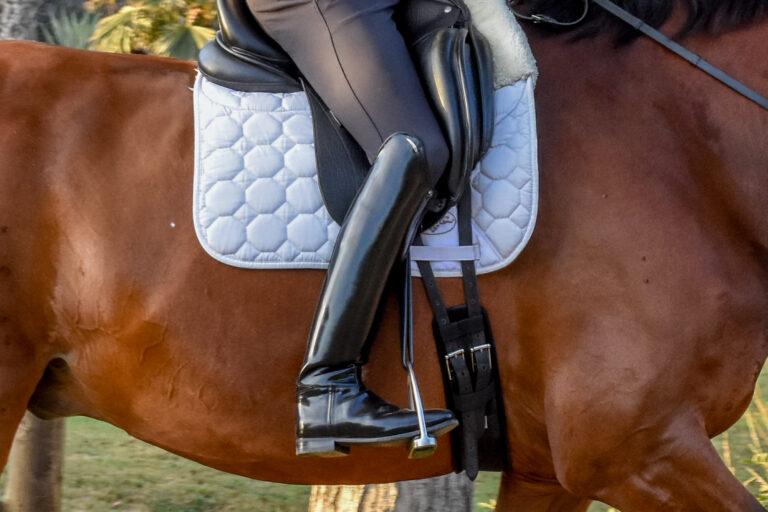
Building muscle and strength in the dressage horse requires physical health, proper nutrition and correct training methods.
Physical Health
When I evaluate body condition, and specifically muscle development, I look at the uniformity of muscle overlying the neck, back and pelvis. If one area is underdeveloped, I look for a cause of discomfort that is limiting muscle growth. For example, if a horse has excellent muscle in the neck and pelvis but poor muscle in the saddle region, I will explore the possibility of poor saddle fit or other causes of back pain.
Joint, tendon, ligament, nerve or muscle pain will limit development of muscle and should be considered in the evaluation of an underdeveloped horse. Similarly, systemic metabolic, endocrine, genetic and neurologic disorders may lead to muscle atrophy. Evaluation of body condition should also occur in the context of the horse’s genetic potential—a lean Thoroughbred may never have the same muscle mass as a Friesian.
Proper Nutrition
Proper nutrition is critical to growing healthy muscle. High-quality protein, sufficient calories and micronutrients are essential. The quality of the protein is determined by its amino acid composition and digestibility. Some proteins lack certain amino acids and the missing amino acid may be added to the ration in commercial diets. Although guidelines for caloric intake are provided with many commercial feeds, there is a large variation in horses’ metabolic rates. Therefore, body condition should be carefully monitored and feed adjusted accordingly.
Obesity can obviously be an impediment to the fitness required for top performance. The accumulation of abdominal fat can prevent development of core strength, which is necessary for a strong topline. Nutritional energy requirements are dependent on the intensity of training and metabolic rate; the latter varies with age and breed. Areas in which horses accumulate fat can be learned by reviewing the Henneke body condition scoring system.
Age must also be considered when monitoring body condition. It is difficult to build muscle in a geriatric horse who has experienced a period of inactivity or illness. Horses over 20 years of age are commonly considered geriatric. Young horses require time to develop the coordination and physical maturity necessary for the stimulation of muscle. Old horses who are in a regular program of modest activity maintain muscle mass better than sedentary horses. Lean muscle mass decreases with age in older horses.
Correct Training Methods
In the presence of physical health and proper nutrition, correct training methods are vital to muscle development. Cardiovascular fitness is necessary to provide adequate delivery of oxygen and nutrients to muscle; therefore, conditioning should be a component of training for every performance horse. Assessment of fitness is subjective and the degree of fitness required is dependent on the level of desired performance. For example, the fitness required to perform a Training Level test versus a Grand Prix test is clearly different. Furthermore, the ability to achieve fitness is dependent on genetic factors.
Warm-up in the beginning of a training session increases the elasticity of muscles, tendons and ligaments. Stretching ensures adequate range of motion necessary for muscle growth. Each training session should begin with five to 10 minutes of walk followed by five to 10 minutes of stretching and suppling. A healthy balance between repetition and variety of movement will increase strength without inducing repetitive stress injury.
Similarly, variety in the surface upon which the horse is trained will stimulate healthy bones, muscles, tendons and ligaments. This can be achieved by diverse training in the arena, hacking and longeing. Although rest is essential, light activity the day after strenuous work provides blood flow to muscles and the removal of metabolic waste. Because muscle development is a complex process, the coordination of trainer, rider, veterinarian and nutritionist is required for optimal results.
Mark T. Donaldson, VMD, received his bachelor of science from Villanova University and graduated from the School of Veterinary Medicine, University of Pennsylvania, in 1993. After completing an internship at the University of Georgia, he returned to the University of Pennsylvania for a residency in internal medicine. He is a member of the American College of Veterinary Internal Medicine and is a partner at Unionville Equine Associates. His wife, Emily Donaldson, is a professional dressage trainer.
This article originally appeared in the January 2017 issue of Dressage Today.











